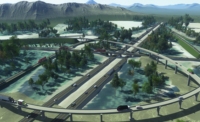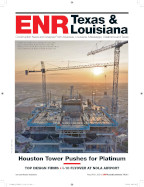The U.S. Army Corps of Engineers has offered an emergency permit to the state of Louisiana to build 45 miles of coastal barrier berms, out of 128 miles of berms the state originally sought permission to build in its effort to block the migration of oil to wetlands from the April 20 Deepwater Horizon oil spill in the Gulf of Mexico.
Col. Al Lee, New Orleans District Commander, offered the permit on May 27, but noted the state still is responsible for obtaining other required permits and for coordinating the work with other federal agencies whose approval also may be required.
The National Incident Commander for the response to the BP oil spill, U.S. Coast Guard Adm. (ret) Thad Allen subsequently approved one 3- to 5-mile section of the berm that the Corps has permitted, as being eligible for funds under the federal government’s ongoing oil spill response. This paves the way for payment by BP, as a responsible party, or the federal Oil Spill Liability Trust Fund.
The other 40 miles of permitted berms, if Louisiana builds them, will have to be funded by state and local sources.
A spokeswoman for the Corps said, after seeking input on the application from state and federal agencies and other parties, as required by law, the Corps did not ask for any modifications to the profile of the proposed berms, only limited the areas where they may be built.
Borrow areas in the original proposal were modified to select sources away from the original proposed sites paralleling the berm, a mile directly offshore.
The areas the Corps approved for berms stretch west from Sandy Point near the mouth of the Mississippi toward the backside of Barataria Bay, and on the east side of the mouth of the river to include the northern half of the Chandeleur Islands. It comprises 6 reaches, out of a total of 19 for which approval had been sought.
“These areas have been identified as critical locations where greater immediate benefit is likely to be achieved with minimal adverse disruption of coastal circulation patterns,” Lee said.
Profile diagrams included in the application show the berms to be placed in front of the Gulf-side toe of the shoreline and, if the scale is correct, show them as being approximately 45 ft wide at the base, with a 20 ft wide crown and an elevation of 6 ft above mean sea level, which could describe an oil boom. Gaps are to be maintained for tidal exchange.
However, the plans also indicate a slope of 25:1, which would seem to mean the berms would need to be at least 320 ft wide, which is closer to the description in the document’s executive summary, which describes them as having a 300-ft-wide base.
A request for clarification from Louisiana's Coastal Protection and Restoration Authority has not yet been answered.
The Corps says that studying how the berms perform will allow for further “evaluation of the remaining, more difficult areas” not authorized under the permit, should the state maintain an interest in addressing those areas too.



